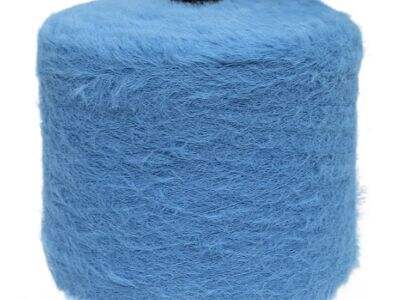Are you new to sewing with stretchy materials? Great. You are in for some exciting experience. So you had better pay attention carefully because Yiheng has already provided you with some tips and tricks that will make your sewing project go a lot more smoothly.
The Best Thread to Use
First, let's get one thing out of the way, something very crucial: the thread. Having the correct type of thread is extremely important when you are sewing stretchy fabrics. Having the wrong type of thread can lead to seams that easily break. That's not what we want, right? Just make sure to choose a stretchy thread that will resist the pulling without breaking. This will keep your projects intact and looking great.
Simple Tips for Stretch Seams.
Then we will do stretch seams. When you are sewing stretch yarns like spandex, jersey, and lycra, they need a little more care and thought. To use on stretchy seams that will hold the tension of the elastic, you will want to use a stretch stitch. I prefer the zigzag stitch as a fine choice. It keeps your seams floating with the fabric. Use a standard straight stitch and your seams might pop open, and there goes all your effort.
For instance, utilizing specific threads like wooly nylon or stretch polyester thread is an effective reminder. These are stretchy forms of threads that work really well in stretchy fabrics. They are also less prone to snap than regular thread. For your reminder, the right thread has a big difference.
Selecting The Right Thread For Your Stretch Fabric.
And when you are choosing thread for your elastic fabrics, ensure that you look at the thread spool's label most carefully. Look out for words such as "stretch," "elastic" or "nylon. These descriptors signify that the thread is cut to be usable on stretchy fabrics Fancy yarn, and will give you your best results when doing your sewing projects.".
For example, consider the weight of the thread you are using. If you are working on lighter fabrics, you want to use a lighter weight thread. It will keep the fabric flowing nicely. For heavier fabrics, however, you want to use a heavier weight thread. That way, your seams will be safe and the projects will last for a long time.
Other tips for sewing stretchy fabrics.
With your stretch material and good thread now in hand, let's begin sewing. If you wish to sew like a professional, these are some easy tips to observe:
Employ a stretch needle. It is a specially built needle for stretchy material. It prevents you from ruining the material while sewing, always a bonus.
Use a walking foot. A walking foot is an extra foot that sewing machines have to feed the fabric smoothly through the machine. It's crucial when working with stretchy fabrics because it keeps everything lined up.
Use a longer stitch length. An extended stitch length lets seams stretch and not break. That way, your finished item will be easier to wear and will last longer.
And finally, some insider secrets from Yiheng that will make you an even better sewer:
Beep, beep. Use a stabilizer. A stabilizer is another lighter weight of material that you sew to the back of your stretchy material. This can stop the material from getting too stretched out as you sew. It makes it much easier to handle, and your sewing is neater.
Use a press cloth. Always use a press cloth when you are ready to iron your stretchy fabric. This provides a heat barrier between the iron and your fabric. You don't want your Monofilament yarn to melt or go shiny, so this step is very, very important.
Sew slowly. Stretch fabrics DTY Carpet yarn are a bit tricky to sew. Therefore, sew at your own pace. Taking things slow will help ensure everything is coming together and prevent mistakes.
And there you have it. Yiheng's sewing tricks and advice for stretchy fabric the and best thread to use. Note: As always, practice makes perfect, so keep sewing. Enjoy your projects. Happy sewing.

 EN
EN
 AR
AR
 BG
BG
 HR
HR
 CS
CS
 DA
DA
 NL
NL
 FI
FI
 FR
FR
 DE
DE
 EL
EL
 HI
HI
 IT
IT
 JA
JA
 KO
KO
 NO
NO
 PL
PL
 PT
PT
 RO
RO
 RU
RU
 ES
ES
 SV
SV
 CA
CA
 TL
TL
 ID
ID
 LV
LV
 LT
LT
 SR
SR
 UK
UK
 VI
VI
 SQ
SQ
 HU
HU
 MT
MT
 TH
TH
 TR
TR
 MS
MS
 GA
GA
 LO
LO
 LA
LA

